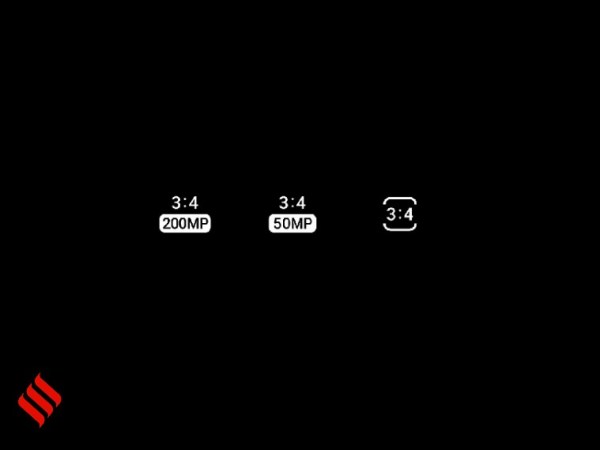Pixel binning on smartphones explained: Do we need 200MP cameras?
Brands use Pixel binning to improve picture quality on high-resolution camera sensors on smartphones and Pixel binning also allows devices to offer dynamic camera resolution.
 Galaxy S23 Ultra with 200MP primary camera (Image credit: Vivek Umashankar / Indian Express)
Galaxy S23 Ultra with 200MP primary camera (Image credit: Vivek Umashankar / Indian Express) Pixel binning is a common term used in smartphone photography. From improving low-light shots to capturing pictures with a lot of details even when zoomed in – a lot is possible by using high-resolution camera sensors on smartphones. In fact, even Apple recently got into the high-resolution and pixel-binning bandwagon with the launch of the iPhone 14 Pro with a 48MP primary camera.
Most modern smartphones offer higher resolution sensors than professional DSLR and mirrorless cameras and with the Galaxy S23 Ultra, Samsung introduced a massive 200MP sensor on its flagship offering. Here is why pixel binning is the next big thing in smartphone photography.
What is pixel binning?
Pixel binning is nothing but combining a group of pixels into one large pixel. A 12MP smartphone camera sensor will have 12 million pixels and these light-gathering pixels are technically known as photosites or light collectors. The pixel binning varies from sensor to sensor. A 48MP sensor usually bins four neighbouring pixels to create one large pixel that can gather more light, while a 200MP sensor will combine 16 pixels into one large pixel and both will deliver a 12MP picture.
The 200MP sensor used on the Galaxy S23 Ultra (review) has an individual pixel size of 0.6-micrometre (μm) and when it does pixel binning to form a 12.5MP sensor, the effective pixel size changes to 2.4μm, where each individual pixel can gather more light – which reduces the noise and improves the picture quality. Apple also introduced pixel binning on the iPhone 14 Pro Max (review) with a 48MP sensor for the first time on an iPhone, which combines four individual pixels to create an effective resolution of 12MP with a larger pixel size for improved low-light photography.
 Samsung Galaxy S23 Ultra can shoot native 50MP and 200MP pictures (Image credit: Vivek Umashankar / Indian Express)
Samsung Galaxy S23 Ultra can shoot native 50MP and 200MP pictures (Image credit: Vivek Umashankar / Indian Express)
With a 200MP sensor, Samsung could offer various resolutions on a single camera while still retaining certain resolutions. This is why the Galaxy S23 Ultra offers 12.5MP mode (for low-light conditions), 50MP mode (for average lighting conditions), and a native 200MP mode for bright day-light conditions, allowing users to capture a picture with a lot of pixels without worrying about the noise or clarity.
Coming to Android phones, it is very common to see 48MP, 50MP, and 64MP sensors with pixel-binning technology. Similarly, a bunch of smartphones also offer 108MP and 200MP sensors. In fact, it is very hard to see an Android phone that costs over Rs 15,000 without pixel-binning technology.
Advantage of high-resolution sensors over low-resolution sensor
If the high-resolution sensor has to be pixel-binned to get clear pictures, why do not brands use low-resolution sensors, one might ask? The simple answer to that question is versatility. A low-resolution sensor with large pixels (1.5μm) will natively take good pictures in most lighting conditions. However, it does not offer the freedom of a high-resolution sensor, allowing users to capture 200/108 or even a 50MP picture in daylight conditions.
Another neat implementation of a high-resolution sensor is the ability to crop a part of the main sensor to offer optical zoom on a single lens, and the same has been achieved on the recently announced Xiaomi 13 Pro (review). Similarly, there is also a spike in the number of phones with a 1-inch sensor, where the photosite or the light collectors will be slightly larger on these sensors, hence, they deliver better pictures even without pixel binning.
However, due to space constraints, not every smartphone can accommodate a physically large sensor, and brands also heavily depend on computational photography (AI) and post-processing to improve image quality despite having a smaller sensor size.
A high-resolution sensor also allows high-resolution video recording. Android smartphones have been offering 8K video recording for a while now. However, when it comes to the iPhone, you only get 4K video recording, the maximum video resolution one can record on a 12MP sensor. While it is just not the sensor size, there are also other parameters involved like encoding and decoding when it comes to video recording.
To answer the question, do we need 200MP sensors on a smartphone? Yes, having a high-resolution sensor on a phone allows users to capture pictures with a lot of details and it also allows brands to customise the sensor with pixel-binning technology to deliver better photos in every lighting condition, which is not possible on low-resolution sensors.







